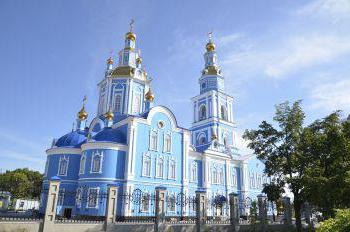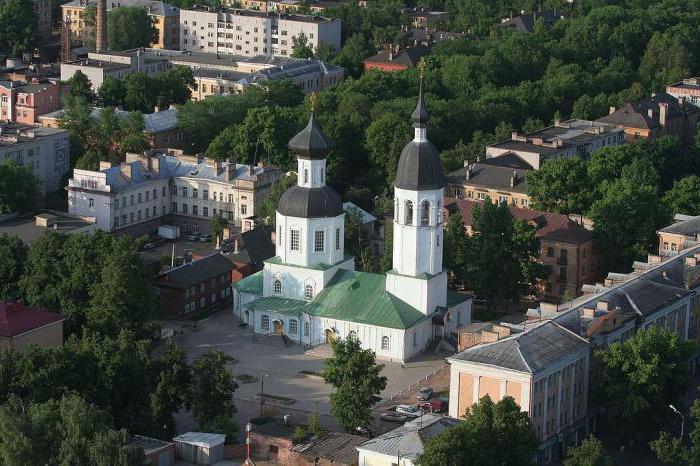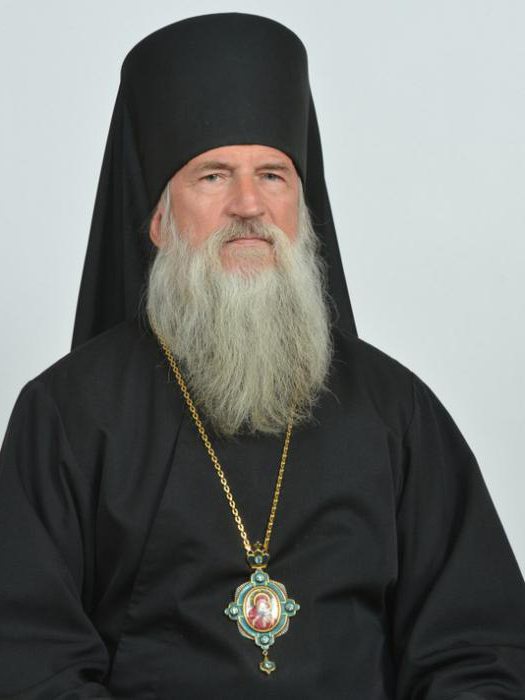The vast territory of Russia has long been dividedOnly on an administrative-territorial basis, where state bodies rule. Our Orthodox country is divided into church-territorial units, otherwise they are called dioceses. Their borders usually coincide with territorial areas. One of these units is the Diocese of Simbirsk.
History of the Diocese
The city of Sinbirsk (later Simbirsk, Ulyanovsk)was laid in the distant 1648 year. His mission was to protect the Russian lands from Nogai raids. Already in the first years of existence, the territory had 18 churches, they were part of the Simbirsk tithe, which in 1657 was transferred to the discretion of the Kazan Metropolitan. The number of churches in the city grew, the territory increased. The question of creating an independent diocese was raised more than once. Almost 200 years have passed, and only in 1832 the Diocese of Simbirsk was established. Immediately she withdrew from the Kazan.

Development of the Diocese
The diocese developed at a rapid pace.In 1840, a seminary was opened in Simbirsk. Soon, at the Spassky Monastery, a school for girls was created, giving a spiritual title. Thanks to the active work of Bishop Feoktist (1874-1882), diocesan and also district congresses of clergy, deanery councils, a mission committee were created in Simbirsk, the publication of the Simbirsk Diocesan Gazette was opened. In the time of Bishop Nikandr (1895-1904) 150 church schools were established.
The Soviet Troubles
With the advent of the 1917 revolution for Simbirskthe diocese, as well as for the entire clergy, began hard times. Active development has stopped. The Simbirsk Diocese experienced terrible shocks. Temples ruthlessly destroyed by advisers, many clerics laid their heads for faith. In the church itself there was a renewal split. For several years, all the new schismatic movements were formed. The lords changed, and already in 1927 Ulyanovsk became the center of three dioceses.
The 30s of the last century are well knowncruelty. Then there was an active struggle against all church activities, many clerks, bishops were exiled, imprisoned. However, during the war, it was in Ulyanovsk that the head of the Russian Orthodox Church Metropolitan Sergius arrived. The Diocese of Simbirskaya (Ulyanovsk) was rebuilt. But already in 1959 a new round of anti-church activities began. The diocese remained without the archbishop. Alternately, it was attached to the Kuibyshev lords, then to the Saratov.

Revival. Savior-Ascension Cathedral
In September 1989 the Ulyanovsk diocese wasfinally restored. Its borders coincided with the regional territory. The first year the administration of the diocese was located in the basement of the Neopalmovsky Cathedral. In 1993, Zhdanov's monastery was revived, the Komarovsky Mikhailo-Arkhangelsk Monastery was opened. In general, relations with the authorities were strained, there was no need to wait for help. The historical name of the Diocese of Simbirskaya was returned only in 2001.
Together with the restoration of the diocese, a question was openedabout the construction of the cathedral. In 1993, a meeting took place between the Governor of the region Goryachev and Bishop Prokla, where it was decided to build the Savior-Ascension Cathedral. The administration of the region promised to help in the construction, about which the order was signed. The development and examination of the project were completed by the end of 1994. The prototype was the old Spaso-Ascension cathedral. Historical photos of the temple were used, since the drawings were not preserved. The plans were to increase the cathedral four times, while maintaining all the advantages of architecture. The temple was designed for two thousand people, around planned infrastructure, which includes administrative buildings, workshops, garages, a museum, a Sunday school, the brotherhood of St. Andrew. On June 9, 1994, they consecrated a place for construction and installed a foundation stone.

The whole world
In 1995-96 the pile was ready, piles were driven in.Unfortunately, the country defaulted and the construction was frozen. To the great chagrin of all believers, for ten years the matter did not move from the dead point. In 2006 the governor of the region became Sergey Morozov. Thanks to his support, it became possible to continue the business. There were activists, donors. Even ordinary people did not spare money, they translated as many as they can, as far as they can, understanding what good deeds their money is going to. All Christians rose to rebuild the building.

For all the time the construction of the temple has never beentheft of materials, Father Alexis himself was following the progress of the work. He spent most of his time here. A large number of craftsmen and craftsmen took part in the construction and decoration of the church. Their soul is embedded in every stone, in every painted icon. The works were still in full swing, and the church on holidays had already received parishioners, services were conducted. So in 2014 the first divine liturgy was held here by the Metropolitan of Simbirsk and Novospassky Theophanes. Now solemn services are spent by Anastasius (metropolitan), he also controls the diocese. Hundreds of people gather in the temple. On the day of the Great Feasts in the courtyard of the temple, you can also not get through.
For more than 20 years the cathedral was rebuilt.Now it can rightly be called an architectural pearl and the main attraction of Ulyanovsk. Thousands of believers are drawn here not only from the region, but from all over Russia.












